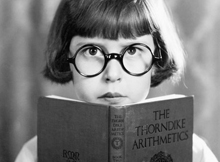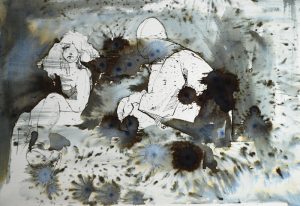
FRIENDS WHO HELP THEIR FRIENDS
by Daniel Davis
Gambling with Rick is kind of like being jealous of God. There’s no point to it. You can bring your best game, you can have luck on your side, and he’s still going to clean you out. We instituted a rule last year—no bets larger than fifty cents. Rick was pissed. But we had to do it. He was getting rich off us, and that wasn’t right.
I’m only a passable card player myself. I tend to play in a daze. Like the other guys, all but Rick, I go for the beer and conversation. And, when Rick hosts, for Julianne. Rick doesn’t know. He truly doesn’t know. About her and Scotty, about her and Adam. I’m not sure about her and Chester; sometimes I think maybe, but then I think Chester doesn’t have it in him, and I think she knows that. He eyeballs her, maybe more than the rest of us, but he can never string together three words in her presence. Some women think that’s cute, but most prefer a man who can verbalize everything he’d do to them. In my experience, at least.
Me and Julianne? Once. Just once. I’m married myself. We were in trouble at the time. We aren’t now. Doesn’t mean I wouldn’t; I would, I think, though the thought makes me feel like an ass. She can do that to you. She can get you to hate yourself before you’ve even done anything to earn it.
Rick pulled me aside one night, after the game. He’d only taken eight bucks from me, which I considered a small victory. The other guys filed out, but Rick made a pretense to keep me behind. I became stiff and awkward, ’cause I thought he was gonna maybe say, “Did you see the way Scotty looked at Julianne?” And I’d have to fumble for a reply, because admitting what Scotty had done would eventually lead to what I had done. Scotty knew. We all knew—everyone except Rick.
“They want me to move,” he tells me. The guys have left. Julianne is picking up after us, sweeping cans into the trash. Her wrists are so slender. Her fingers, too. You’d never know what strength she has in those hands if you hadn’t felt it yourself. She’s wearing cutoffs (she knows we like it) and a Bears jersey. God bless Jay Cutler.
She smiles at me. Rick’s back is turned; he’s speaking to me over his shoulder because this is important. I smile back. She wants to again. I can tell. She wants to because she can.
“There’s an opening in Gary,” Rick says. Voice muffled.
“Not a long trip,” I say, eyes still locked with Julianne.
“That’s what they all say, right?” Rick grunts. “They all say that, and then no one ever sees each other again.”
“It’s not that far,” Julianne says.
Rick finally turns around. “Go fix a sandwich,” he tells her, but it’s playful, a joke between them. They’re in love. She needs other men in her life, but she’s still in love with him. Go figure.
“Well, if you’re gonna be that way,” she says, and flicks her hips as she strolls into the kitchen. It’s supposed to be a joke, an over-the-counter flirt, but it’s kind of under-the-counter as well, and I have to shift slightly so Rick won’t see my reaction.
“Seriously,” Rick says when she’s gone, handing me a beer I didn’t ask for. “Seriously, Frank. Gary.”
“You want it?”
He thinks about it over half his beer. Then he says, “Yeah, I do. It’d be a good opportunity. More money.”
I nod and look at the door that leads into the house. “More money is good.”
“You think I should do it?”
My beer is flat and room temperature. Rick has a fridge out here, but we keep the beer in a Styrofoam cooler during our games. The ice melts. We use the cooler because the fridge is fairly new, and we’re all suckers for tradition.
“I think,” I tell him, “that it’s not my call to make, is it?”
He sighs. “Well, I’d value your input.” He belches. “About that much.” A smirk appears, then vanishes quickly. “But seriously. Do you think I should?”
What I think he should do is go inside and confront Julianne. They’ll survive it; he loves her that much. I don’t think she’ll stop, though. Here, Gary, or Fairbanks for that matter, I don’t think she’ll stop. She can’t. And probably, Rick wouldn’t want her to if she could. She wouldn’t be the same if she did.
“I can’t really tell you,” I say, but my voice hitches a bit, and I wince.
“Yeah, you can.” He leans forward, even though he’s beside me and I’m turned away. “Come on, man.”
My turn to sigh. I kill the beer. It makes my stomach sick.
“I think you should stay,” I tell him. I fumble for an excuse, and add, “Hell of a good life here.” That comes easy, so I tack on: “Besides, they’re real card sharks in Gary. So I’ve heard.”
He laughs. He’s relieved. He wants to move, but he doesn’t at the same time. I wonder what Julianne wants. Really, I doubt it matters much to her. Me, Scotty, Adam—we have our counterparts in Gary as well. Guys like Rick always have friends like us.
“Thanks, man,” he says, and claps my shoulder.
I nod and accept the next beer he offers me, even though I don’t want it.
“No problem,” I tell him, and force myself to meet his gaze. “Just wouldn’t be the same without you.”
============================================================================
 Daniel Davis is the Nonfiction Editor for The Prompt Literary Magazine. His own work has appeared in various online and print journals. You can find him at www.dumpsterchickenmusic.blogspot.com, or on Facebook.
Daniel Davis is the Nonfiction Editor for The Prompt Literary Magazine. His own work has appeared in various online and print journals. You can find him at www.dumpsterchickenmusic.blogspot.com, or on Facebook.

 Sean Prentiss is the co-editor of The Far Edges of the Fourth Genre, an anthology about the craft and philosophy of creative nonfiction. He teaches at Norwich University and lives in northern Vermont.
Sean Prentiss is the co-editor of The Far Edges of the Fourth Genre, an anthology about the craft and philosophy of creative nonfiction. He teaches at Norwich University and lives in northern Vermont.










